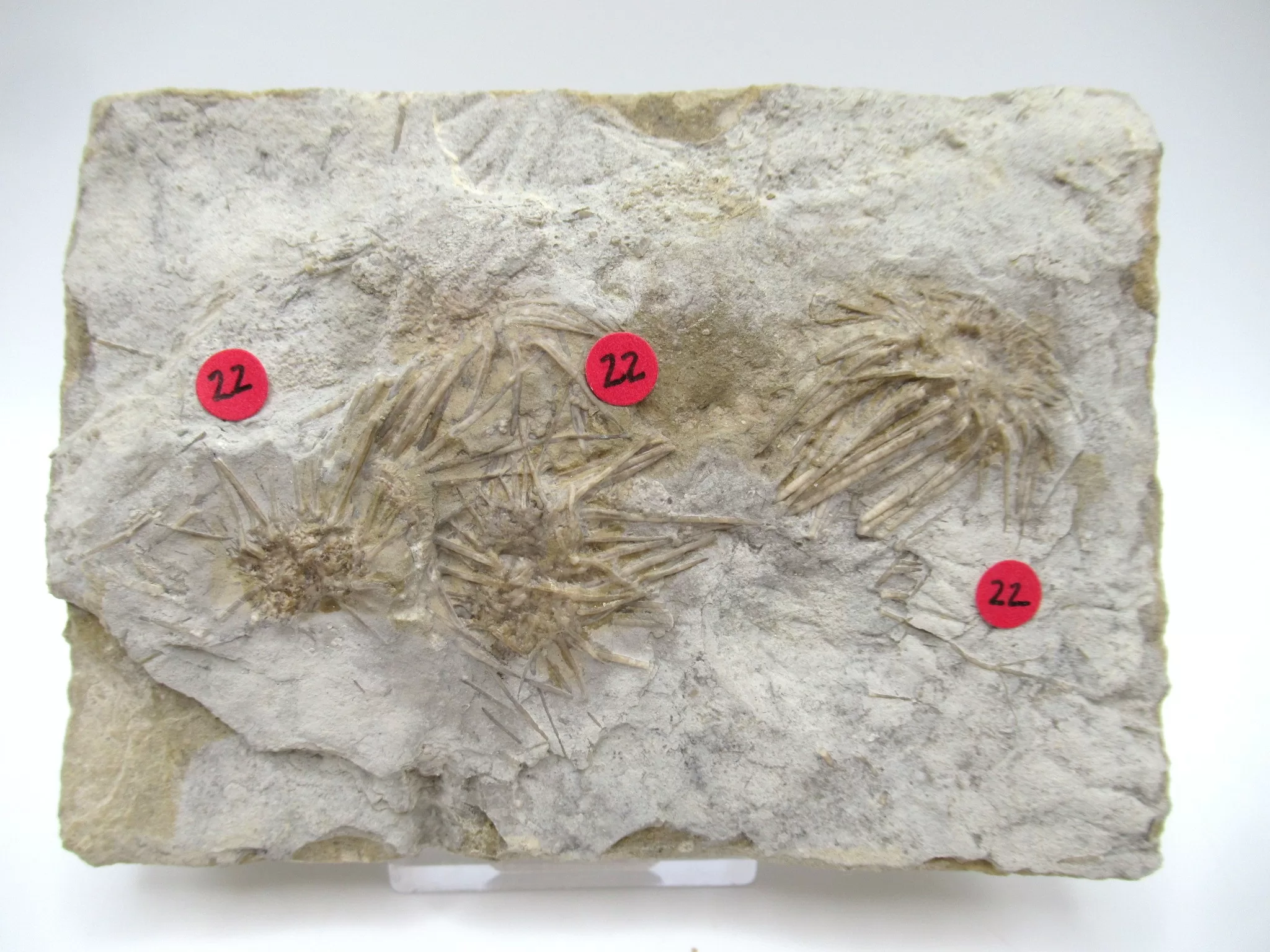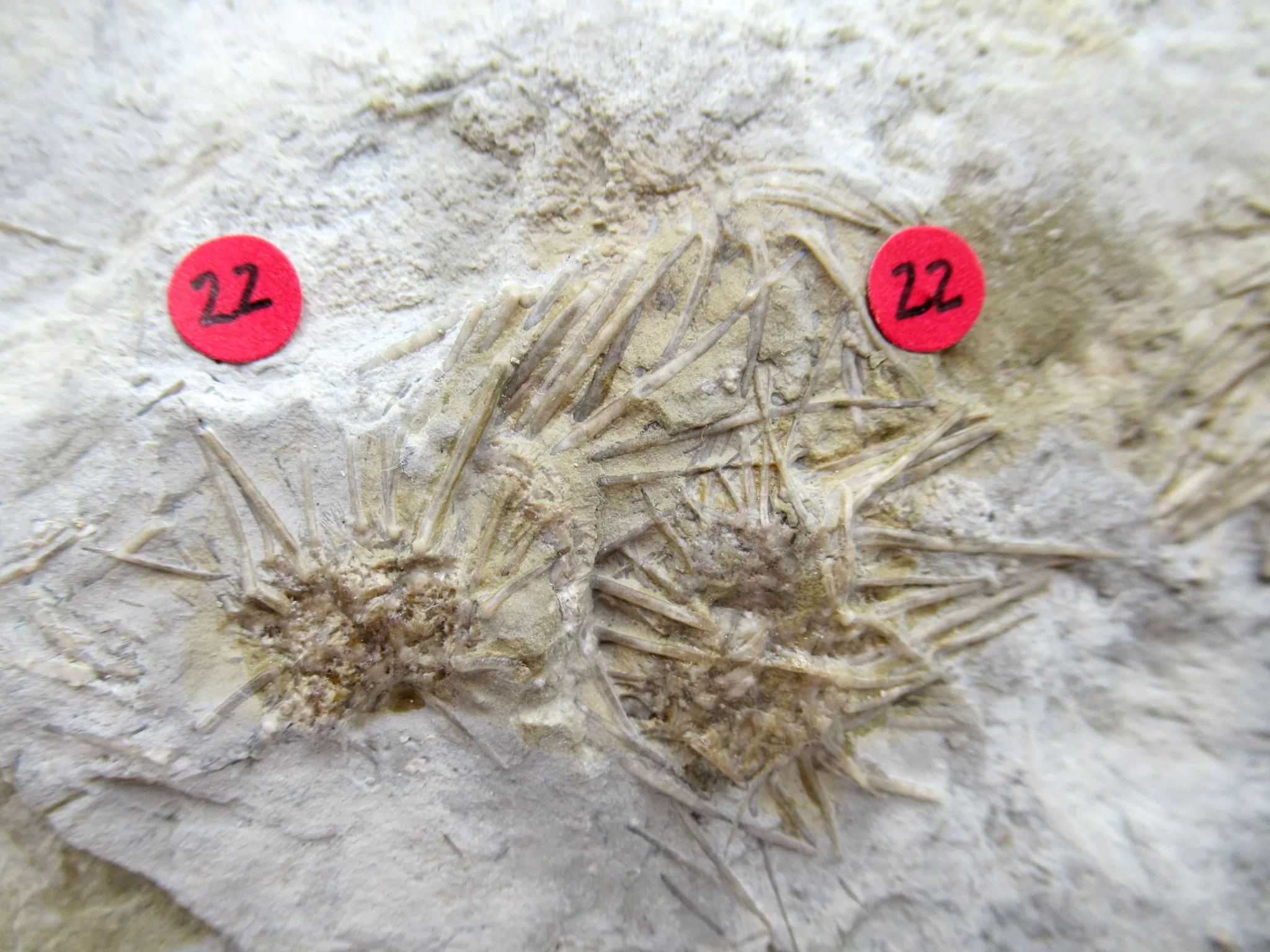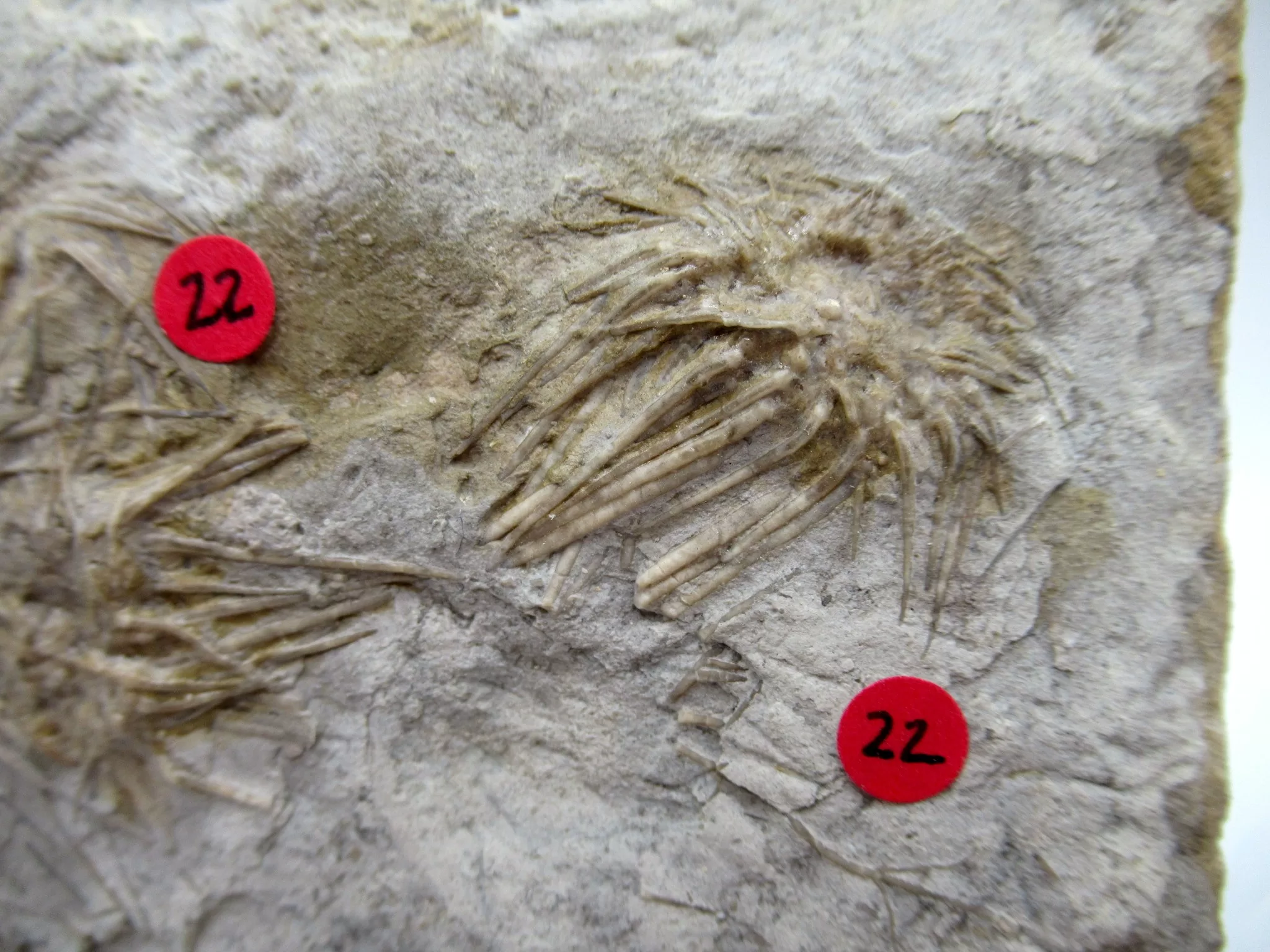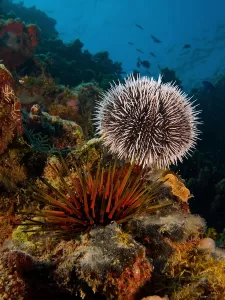Description
GILMORE CITY IOWA ECHINOID
- Gilmore City Echinoid Plate
- The RED DOTS with Numbers are to identify the Echinoids – SEE ID LIST FOR IDENTIFICATION
- Mississippian Age
- Gilmore City Formation
- Gilmore City, Iowa
- This plate of Echinoids measures 2.91 x 4.03
- More Echinoid Fossils for Sale
WHAT IS THE GILMORE CITY LIMESTONE?
The Gilmore City Limestone is a geologic formation in Iowa. It preserves fossils dating back to the Carboniferous period.
WHERE IS GILMORE CITY?
The Gilmore City Formation of north-central Iowa represents an upward-shoaling sequence of carbonate rocks ranging from normal marine conditions in the lower portion of the section to prograding oolite shoals (a sedimentary rock formed from ooids, spherical grains composed of concentric layers) at the top. At most exposures, the formation contains an abundant and diverse fossil fauna consisting mainly of crinoids, echinoids and gastropods
WHAT ARE ECHINOIDS?
Echinoid fossils are the fossilized remains of sea urchins, spiny marine invertebrates that live on the seabed. Humans have been interested in these fossils for millennia, have considered them lucky, have imbued them with magical powers and linked them to their deities.
They are marine organisms that have existed since the close of the Ordovician, circa 450 million years ago. They are members of the phylum Echinodermata, which includes crinoids, starfish, sea cucumbers and sea urchins.
The remains and traces of these animals were buried in sediment which over thousands of years became rock, preserving them as fossils.
The living representatives of echinoids are the familiar sea urchins that inhabit many shallow coastal waters of the world. Fossil echinoids closely resemble some living sea urchins, which helps us to understand how they must have lived.
Echinoids may be round, like a sea urchin, oval- or heart-shaped, like a heart urchin or flattened, like a sand dollar. Although sand dollars are often thought of as white, when they are alive they are covered in spines that may be purple, brown or tan in color. Sea urchins and sand dollars may feed on algae, plankton and other small organisms.









